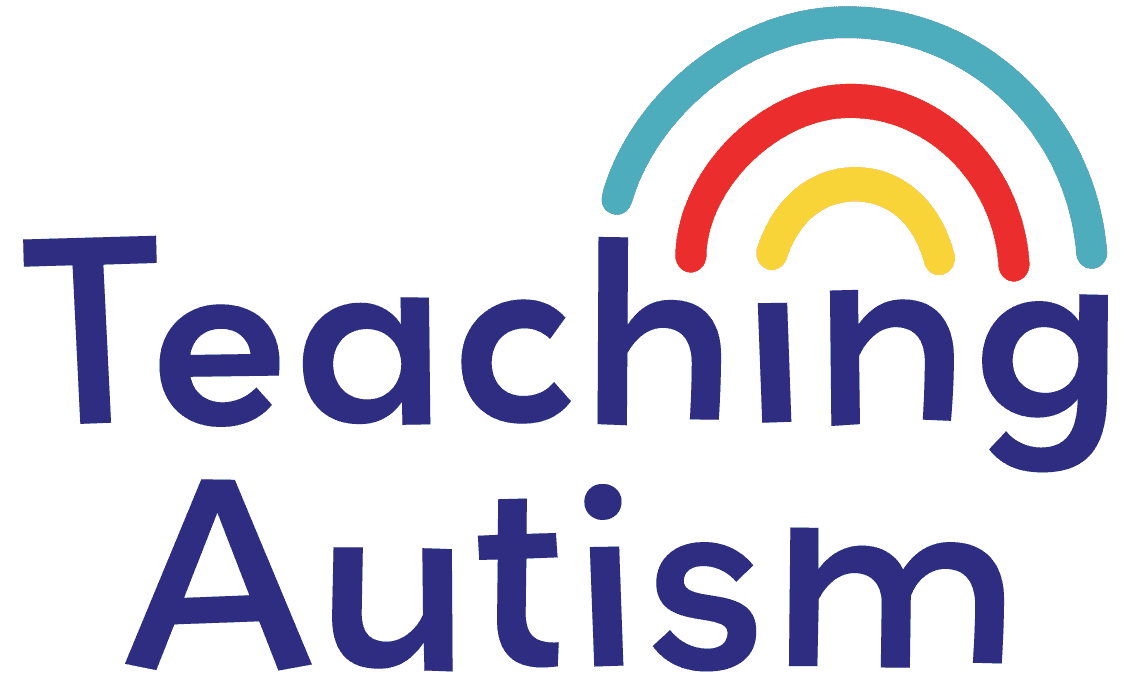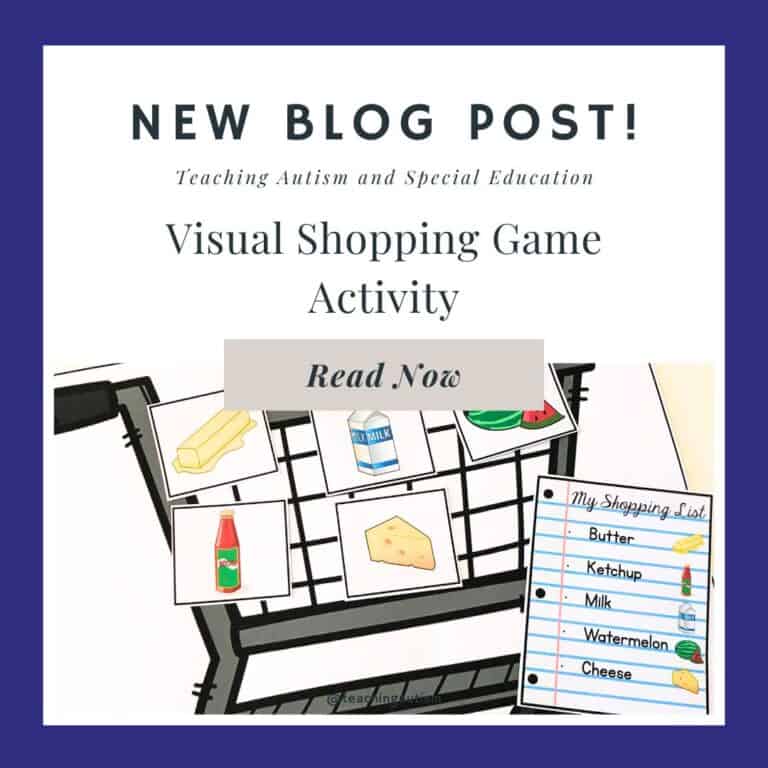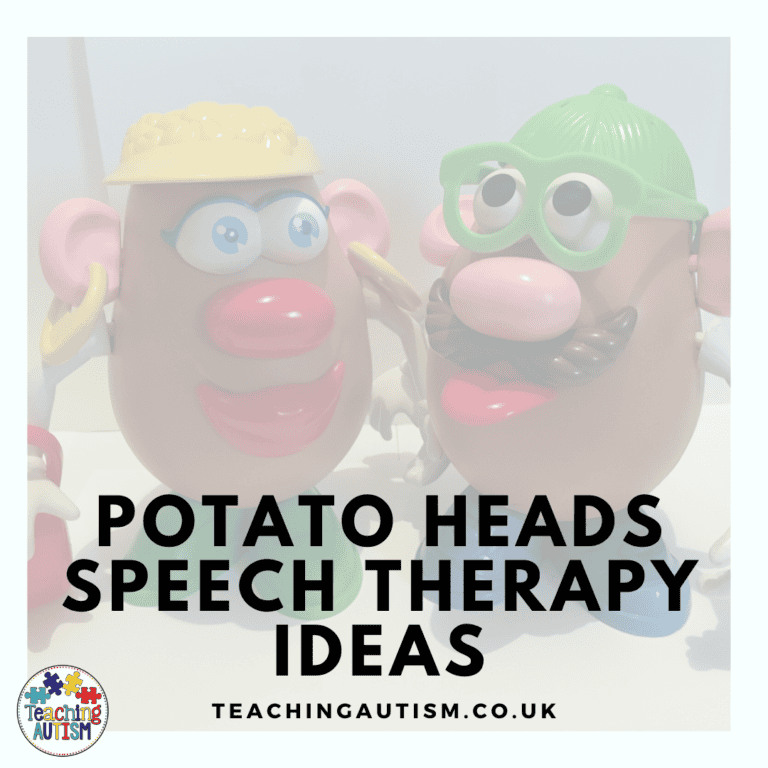Why You Should Be Teaching Wh- Questions
In today’s blog post, I’m talking all about why you should be teaching wh- questions in your classroom with your students. I’ll be talking about what they are, examples of how you can teach them, why it’s important to teach them and the benefits of them. I’ve also included some free downloads for you.
What are Wh- Questions?
Wh- questions are pretty self-explanatory. They are questions that start with a wh- word and they require an informative answer – rather than just a yes or no. However, ‘how‘ is also included even though it doesn’t start with wh.
The questions are; what, when, where, who, whom, which, whose, why and how.
What?
To ask about things. What are you doing?
When?
To ask about times. When are we going swimming?
Where?
To ask about places. Where do you live?
Who?
To ask about people. Who is taking you shopping?
Whom – can also be used to talk about people – object of verb.
Which?
To ask about choices. Which one do you want?
Whose?
To ask about possessions. Whose book is this?
Why?
To ask about causes or reasons. Why are you sad?
How?
To ask about process or manners. How can you get there?
Why Should We Teach Wh- Questions?
A lot of us will usually ask our students questions that require a simple yes or no answer. But, it’s really important for us to work on questioning our students and getting more complex answers from them.
Using wh- questions can help student develop their vocabulary, and their verbal reasoning skills. These questions challenge your students to think about and provide more thorough responses.
They also help us to lay the groundwork for being able to hold conversations. When students are answering questions they are able to hold the conversation and take part in it. As well as being able to demonstrate their understanding and knowledge, as well as gather information.
How to Teach Wh- Questions?
When I’m working on these with students, I like to mix up how I do it with them. Nobody wants to sit and be asked a hundred questions over and over in the same, so I like to mix it up and continue making them fun and engaging for students. Some of the ways that I like to work on these are;
- Generic conversations; ask the questions throughout conversations.
- Reading a story; What do you think happens next? How do you think she feels? Why did he do that? Where is she going?
- Model question and answering skills. We love to sit down and have breakfast as a class each morning. Get your staff to ask each other questions in front of the students; providing a model for these question and answering skills. You can also use this as an opportunity to involve your students in the discussions too.
- My kids LOVE to cut – especially when they’re cutting out of magazines and catalogues. Create a large chart on your board, or an anchor chart, and have your students cut out images from catalogues and magazines. Then, sort these images into the different categories, who, what etc. I.E. A girl will go in ‘who’, a ladder will go in ‘what.’
- Scene work. We LOVE using picture scenes, and these ones all come with the questions ready for you to read out in 2 levels as well as be able to record your students answers and progress. Click here to download and try them with your students. You can also try these Boom Card wh- question scenes to use on computers/tablets etc.
I’ve been working closely with speech therapists for a number of years, and I’m always told by them that ‘what’ is the question to start with first, as this is usually the one that’s mastered earliest. Then, who, where, when, why. Why is usually the hardest for them to work on and master.
Next Steps
I don’t know about you, but a lot of times I’ll find myself reading about something new that I want to try, and then I just feel overwhelmed. Sometimes it’s because I don’t know how to introduce it. Other times I’m just overthinking what to do first to get it set up. So, here’s the steps you can take to start working on these important questions with your students;
- Speak with your SLP and work with them. We like to get them in to work on assessing our students, finding out where they are and where to go next.
- Assess your students, finding a baseline for where they are at with these question and answer skills. Pay close attention to their answers and the vocabulary that they use.
- Decide how you are going to work on these questions moving forward; are you going to have set times of the day to work on them? Are you going to use them incidentally throughout the day – story time? Snack time?
If you want to use them incidentally, I’d recommend having a small print out with reminds on it to help you and your staff remember to ask the questions. Let’s face it, our classrooms can get crazy busy. We’ve got so much going on, we usually have a lot more students than staff. And it can be really hard to try and remember every thing to do.
Once you’ve being doing it for a little while, it will come more naturally to you. But until then, having the reminders are a great help. We like to print out little cards and attach them to our lanyards to reference throughout the day. These also work great as prompts if staff are unsure what question to ask.
Examples of Incidental Questions
- Don’t overthink them.
- Breakfast – What did you have for breakfast today? How is your toast? Which fruit do you want? Who are you going to sit next to? Or who are you sitting next to?
- Snack / lunchtime – What do you want for snack? Who did you sit next to? What did you have for lunch? Which drink do you want?
- Story time – What do you think happens next? Where are they going? Who is happy? Why is he sad? When are they going home? What are they eating?
- Subjects through the day.. Art & crafts; What color paint do you want to use? Who are you working with? What are you making? Music; Which instrument do you want to use? PE; Who do you want to partner with? Math; What do you need?
- Shopping; Why do you go shopping? When are you going shopping? Where do you go shopping? What are you buying when you go shopping?
Activities
Below I’ve included some photos of some of the activities that I do with my students to work on wh- questions. Click on any of the images or links to be redirected to download a copy for you to use with your students too.
Wh Question Scenes
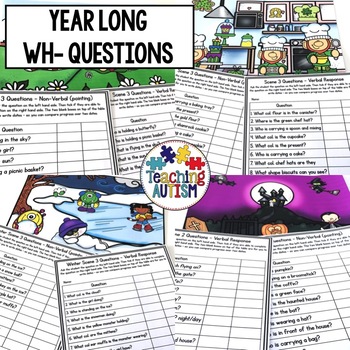
We love to use these wh- question scene packs all year long, with a different theme for each month. Each scene comes with 2 question cards with space to record progress over 2 sessions. My kids love using these visual scenes – and with the questions provided for them, my staff can easily work on the scenes without trying to think of questions. Check them out here.
Wh Question Boom Cards
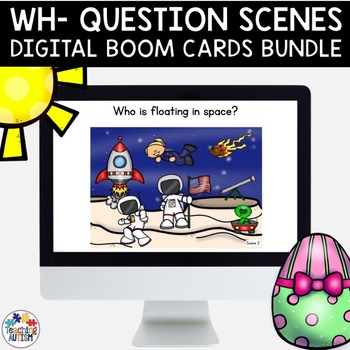
When we had to move to distance learning, I needed to find a way that I’d still be able to work with my students and be able to track their progress. This is when I discovered Boom cards, and honestly, they’ve been amazing. My kids love how interactive and engaging they are. Plus they can be done on the computer, laptop, tablet etc.
I’ve been using these with my students so that I can see the results of how they are answering the questions, while still being at home. And I intend to keep using them even when distance learning is finished. Click here to try them out.
Adapted Books
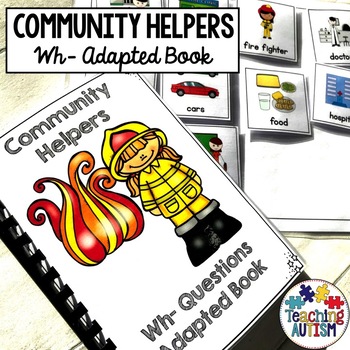
If you’ve been following me for a while, you’ll know how much me and my students love to use adapted books. And there”s no reason they can’t be used for wh- questions as well. This community helper themed book is perfect for working on each of the wh- questions in a hands-on and engaging way. Try it out here.
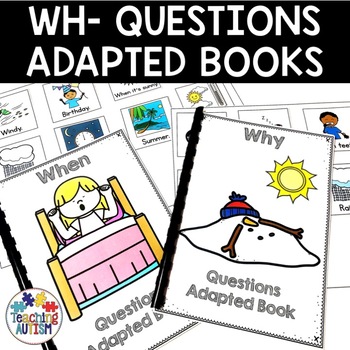
I also like using this adapted books pack, where there’s an adapted book for each wh- question. My students have always responded well to adapted books, and they’re a great place for us to start working on sentence building skills. Check these out here.
Free Downloads for You
I don’t want you to leave empty handed today. So, I’m linking below some free downloads for you to be able to work on wh- questions with your students.
- St Patrick’s Day Wh Question Worksheet
- Easter Wh Question Scenes
- Wh Question Visual Mat
- Reminder Wh Question Prompts – Cut up and attach to lanyards.
I hope you have found this blog post helpful, if so, please consider sharing it with your friends and colleagues on social media. If you have any ideas to share, please feel free to leave them in the comments below.
P.S. Have you signed up for a 3 day free trial of our VIP membership yet? If not, click here to do it now and go and get access to a huge range of resources, templates, crafts and more for free.

